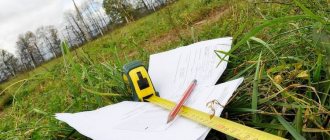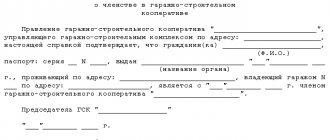A little history...
The 90s left their mark on many sectors of our country.
At this time, Russia began to develop new relations in land legislation. An innovation appears - the “Land Code”. It contains truths that relate to the property of individuals and plots of land. Several years passed, and the demand for land plots did not increase. The territory of the Russian Federation is large; there are no ways to carefully regulate land turnover.
From 1991 and over the next ten years, there was a long transition phase of the new implemented reform in the field of land relations. It ended when the authorities adopted and began to implement a new and revised version of the Land Code of the Russian Federation. He was supposed to become an assistant in establishing order in relation to land plots, but as time has shown, this did not happen. This was not enough to obtain land for construction.
There is a law as amended in 2015. This is a new edition of the Land Code. A lot has been thought out in it and flaws and errors have been corrected. Changes were made to ensure the turnover of land plots and fully satisfy the housing needs of Russian citizens.
What is suitable for individual housing construction?
None of the existing legislation in our country, be it Land or Town Planning, can help determine whether this object belongs to individual housing construction. To understand this, you can use a number of signs.
- The site provides for the construction of a private residential building, which will be used year-round. It will not be possible to build a country house.
- Such a house is built separately from all the buildings on the site. For example, a townhouse and quadrox do not belong to individual buildings.
- Only one family can live in an individual house. In other words, the house must have a full address without any shares.
- Individual houses cannot exceed twelve meters in height.
Not all the land available in Russia is suitable for the construction of a residential building. Our state has established strict limits on its use.
Characteristics of land plots
Each plot of land is characterized by two main indicators:
- land category;
- permitted use.
These indicators are indicated in the Extract from the Unified State Register of Rights to Real Estate.
If the land plot is not used for its intended purpose, the owner will have to pay a fine.
Only one category of land plots is suitable for the construction of a private house - settlement land. To obtain a plot with this status, you need to contact the administrative body of the area in which construction is proposed. But this is not enough.
There is a concept - “urban planning plan”. It may involve different uses of plots of land within a populated area:
- Individual housing construction.
- Construction of multi-storey housing stock.
- Construction of business and business centers.
- Conducting communication networks.
- Construction of parks, squares and other recreational areas.
From this we can conclude that an allotment of land for the construction of your own residential building can only be obtained if it belongs to the lands of settlements with permitted use: for individual housing construction.
If you build a private house on land with a different purpose, this can lead to serious problems. For example, such as demolition, and you will have to do this at your own expense or you will not be given the opportunity to register at your place of residence.
Who can receive a land plot
And now you have found a plot that is designated on the Cadastral map as individual housing construction.
What's next? The main thing here is not to rush to run to the administrative body of the local government, but to study which category of citizens has the right to receive a plot of land from the state for free. In other cases, a plot of land may be purchased through an auction.
Citizens of Russia can receive a plot of land for free:
- families with 3 or more children;
- those who managed to rent a plot of land before the 91st year of the 20th century or can use it indefinitely;
- citizens who are veterans of both the Great Patriotic War and modern military conflicts;
- military personnel who served under contract for more than 15.5 years;
- pensioners of the Ministry of Internal Affairs of the Russian Federation;
- pupils of orphanages and boarding schools who are orphans, but were used by their mothers and fathers;
- persons who are nominated for state awards, such as the “Order of Glory”, “Hero of Labor”.
How to register a vegetable garden as your property?
Asking is faster than reading. lawyers!
Author of the question -
Russia
Parents live in the village, but in a panel house. There is a vegetable garden near the house (the land, i.e. the vegetable garden, is not owned). We would like to own this garden, that is, the land. There were no owners of the land. There are no documents for this garden either. It’s just that previously land was allocated without any documents (the garden is about 45 years old). There are neighbors on 3 sides (all surrounded by a fence).
How to apply
this garden is the property and what documents need to be collected. Parents are pensioners.
Lawyers' answers
Belyaeva Inga Sergeevna (05/05/2016 at 18:30:54)
Good evening!
It is advisable to order extracts from the State Property Committee and the Unified State Register. If this land plot is registered with the municipality, you will need to contact them; if they refuse the transfer, then the right of ownership will have to be proven in court.
Alexey Vladimirovich (05/05/2016 at 19:21:29)
Hello Tatiana!
First you need to identify the owner of this garden. The easiest way to do this is through an extract from the Unified State Register. You can obtain it from the territorial bodies of Rosreestr or through the MFC.
Afterwards, your parents need to contact the federal or municipal authorities (depending on the ownership of the land) to obtain permission to exercise the possibility of purchasing such a plot of land into ownership. As soon as such a document is received, you can begin to register the garden as your property.
Documents required to register ownership of a land plot:
- A uniform application form (it will be given to you at the reception);
- Cadastral passport for land;
- Certificate of acceptance and transfer of land;
- Contract of sale;
- Identification document or power of attorney for the representative (you need a document proving his identity);
- Paid state duty in the amount of 350 rubles if you are going to register a plot for personal use, otherwise – 200;
- An agreement of the alienating party to complete the transaction certified by a state notary;
- Personal documents confirming the alienation of the land plot: passport and property document.
Andrey Viktorovich (05/06/2016 at 08:11:07)
From my personal practice:
1. Check through Rosreestr whether the site is owned.
2. Contact the Administration with a buyout offer
3. The Administration will most likely oblige you to do land surveying and a site plan
4. Next, the Administration will put the plot up for auction; if no one bids except you, the plot will be transferred to you (for starters, for rent).
| Didn't find the answer? Ask your question to lawyers |
Good afternoon, Natalya Gennadievna.
Now I am using it, I want to draw up documents for it, the administration refuses, they say that this land should be registered under individual housing construction. Natalya Gennadievna
What does opposite mean? Opposite of what? What is between your site and the disputed site?
I agree that I can also build a house there, again the refusal: you already have a house, why do you need a second one. Natalya Gennadievna
It is not up to the administration to decide how many residential buildings citizens can have.
The current legislation, unlike the civil code of the RSFSR, does not limit the ownership rights of citizens to residential buildings in the amount of 2 people.
Therefore, any citizen has the right to have three plots for individual housing construction and twenty. There would be a possibility.
Again, if you force it, you won’t be able to sell it, since Alexander Evgenievich Baskakov
The assertion is based on incorrect interpretation and application of substantive law.
The administration may refuse to hold an auction for the provision of a plot of land for ownership or lease only in cases specifically provided for by law.
The municipality does not have the right to simply refuse to provide a plot of land to a citizen.
What should I do? Natalya Gennadievna
It may be that if the plot is not adjacent, then the only option is to buy out or rent this plot at auction, as colleagues correctly pointed out above.
If the desired plot has been formed and is registered in the cadastral register, you have every right to contact the administration with a corresponding application.
Currently, current legislation does not provide for other options.
Sincerely,
Registration of acquired land rights is a mandatory step for the owner of the land.
By following the instructions on how to register land ownership, you can register legal rights without unnecessary red tape or complexity. Self-registration will reduce financial costs.
Step-by-step instructions for registering a plot of land and knowledge of the nuances will help you avoid bureaucratic expectations even in 2018.
The registration procedure is quite simple and step-by-step instructions will consist of only 2 steps - collecting the necessary documents and submitting them to the registration authorities. Read on for more details on each step.
Step 1: paperwork
The first step of our instructions begins, of course. from collecting documents.
What documents are needed to register a plot of land as a property? Registration of land ownership is impossible without preparing a package of papers for the applicant.
To simplify understanding, the list of documents to be submitted, fixed at the legislative level, can be divided into mandatory for everyone and specific papers, depending on the path of acquiring ownership of the land.
List of documents
Common to all applicants:
- cadastral passport;
- application (can be downloaded here);
- personal passport + copy.
Below is a sample application - front and back:
In addition, each applicant provides confirmation of payment for registration services - a receipt.
Registration fee:
- 2,000 rub. for citizens;
- 22,000 rub. for organizations.
The specific documents required to obtain a certificate of land ownership depend on the route of obtaining the plot. That is, these are title documents confirming that the applicant has the right of ownership. Variations are different:
- certificate of inheritance;
- contract of sale;
- privatization act;
- deed of gift;
- other.
Step 2: procedure for paying state duty
The next step in the instructions for registering land ownership is paying the necessary state fees.
The current procedure for paying and determining the amount of duty that should be transferred to the budget was introduced in 2015 and is currently in effect.
A complete list of types of registration of real estate rights, including rights to land plots, can be studied by clicking on the link. If we single out a subsection that deals only with land issues, then there is a division according to:
- owner - an individual or legal entity;
- purpose of land - agricultural or general;
- the primacy of registration – regulation of the “dacha amnesty”;
- ways to obtain ownership.
Thus, in order to determine the amount of the duty, you need to know who the owner is, what kind of registration it is, on the basis of which ownership rights are obtained, as well as the purpose of the land.
| Condition | Price |
| Standard registration of transfer of ownership. The owner is a legal entity. | 22,000 rub. |
| Standard registration of transfer of ownership. The owner is an individual. | 2,000 rub. |
| Registration of a plot for conducting subsidiary (dacha) management by an individual. | 350 rub. |
| Registration of a share of a plot for conducting subsidiary (dacha) management by an individual. | 100 rub. |
| Registration of a plot of agricultural land | 350 rub. |
| Registration of a share of a plot of agricultural land | 100 rub. |
The amount of the fee can be reduced if you use the services of the Unified Portal of State and Municipal Services, regional and other portals when paying. The benefit will be equal to 30%, that is, when paying, you need to apply a reduction factor of 0.7.
Algorithm of actions:
- Determine the amount of duty. Keep in mind that you can transfer more money, subsequently returning the excess (refund application), but you cannot transfer less with an additional payment later.
- Download a receipt template for an individual.
- Fill out the receipt, indicating the necessary details and payer information.
- Pay the fee. This can be done by contacting any bank or using the services of the state portal electronically.
- Submit documents to the registrar after making the payment.
It is better to wait a couple of days so that the money has time to “reach” the recipient.
Who is exempt from duty?
The following categories of applicants are exempt from paying the fee:
- government departments;
- TSB RF;
- low-income citizens (except for encumbrance).
There is also no registration fee for land:
- state and municipal ownership;
- used for reindeer husbandry;
- regions joining the Russian Federation (example: the Republic of Crimea).
Registration caused by the need to legitimize an encumbrance or any changes in legislation obliging current owners to carry out registration actions is not subject to payment of a fee.
Procedure for areas before 2001
The preparatory stage, which includes documentary work, can last up to several months. The reason is that the collection of documents is often accompanied by the receipt of a cadastral plan. Registration of a plot of land that was acquired before the change in land legislation (2001) involves obtaining a cadastral passport.
The procedure for obtaining a passport is simplified if there is a land survey. The owner just needs to submit an application to the cadastral registrar, pay for the service and receive a passport in 10 days. But, due to the workload of employees, the period may increase, especially in the regions. The end date must be specified individually.
If there is no land survey
In the absence of land surveying, land management work is entirely the responsibility of the owner, which increases the cost of registering land ownership.
In essence, land surveying is the definition and consolidation of the boundaries of a site by regulation. The presence of agreed boundaries means the absence of disputes with neighbors and consistency in inter-neighborhood issues.
Existing disputes must first be resolved in court.
Land management work is carried out by private companies. The scope of work includes:
- collection and analysis of documentation (geodetic, cartographic);
- drawing up a site plan;
- placing the necessary marks and communications on the plan;
- drawing up a boundary plan.
The procedure for registering ownership of land regulates that after receiving a boundary plan, the owner must contact the Cadastral Chamber for registration. Along with the application, you must provide title documents for the site, the applicant’s passport, and a receipt.
If there are no title papers
In a situation where you need to register land ownership in 2021, but the original title documents are not available, or they are not presented properly, you must first obtain or restore them. Depending on the situation, you need to act differently. Possible options:
- Recover lost originals. This applies to cases where the title document was issued by a government agency or organization and it is possible to issue a duplicate.
- Renew the purchase and sale agreement. To do this, you need to have the seller’s contact information, which is problematic if the transaction was completed a long time ago.
- Legalize the transaction in court (filing a statement of claim in court - instructions). This option is suitable for those who have registered land as private property according to the old rules without drawing up an agreement and have, for example, only a membership book.
- Carry out general privatization followed by spin-off. This is relevant to owners of plots acquired through the allocation of a part in a horticultural society.
Step 3: procedure for registering land ownership
The procedure for registering land ownership allows the owner or his representative (by power of attorney) to submit an application. The procedure for registration is as follows:
- Visit to the registrar (Local Registration Chamber or MFC).
- Submission of collected documents.
- Receiving a receipt from the registrar's employee.
- Repeat visit to obtain a certificate.
The procedure for registering land ownership provides for a registration time frame of 7-10 days . However, there may be exceptions. The registrar's employee indicates the exact date of receipt of the certificate on the receipt when submitting documents. The applicant or his representative can receive the certificate form. Providing a passport is mandatory.
Restrictions and prohibitions on registration of land ownership
The step-by-step registration of land ownership involves dividing the procedure into the stage of preparation and direct registration.
At the preparatory stage, the possibility of documenting the fact of transfer of the site into private ownership is checked.
But there are lands on the territory of the Russian Federation that cannot be privatized and, due to legal restrictions, you will not be able to register them.
These are the areas:
- under the jurisdiction of the FSB;
- those involved or possibly will be involved for the needs of the RF Armed Forces;
- included in protected areas.
For citizens who are registering land ownership in 2018, step-by-step instructions provide a basic understanding of the procedure, explain the procedure for preparing documents, as well as the requirements for their preparation. But we must take into account that each registration of a land plot, registration of land ownership is individual, there is no single algorithm suitable for all cases.
Source: https://juridic-help.ru/kak-ogorod-oformit-v-sobstvennost/
Conditions for receiving a free plot
The first thing you should pay attention to is compliance with the basic condition: “The site must have the status of individual housing construction.”
It is necessary to take into account a number of requirements that are put forward in relation to the applicant for the allotment:
- Citizenship of the Russian Federation and permanent registration at the place of residence for more than 5 years.
- You should not own any land plots throughout your life.
- Persons who live in an individual house are allowed, but not the owners.
- Families who live on the territory of a private house, but have the right to improve their living conditions because living standards are not met.
- The family has the status of “Young” and needs improved living conditions.
- There are regional programs that transfer land plots for individual housing construction free of charge.
It is also worth paying attention to the fact that young professionals who decide to work in rural conditions can receive free land from the state. These include teachers and medical personnel.
Vegetable gardening and horticulture
Legal regulation of lands intended for gardening and vegetable farming is carried out:
- Land Code of the Russian Federation;
- Law No. 66 “On gardening, gardening... associations of citizens.”
Plots with the designated purpose of “gardening” are intended for growing various agricultural crops and for the construction of permanent residential buildings, according to Art. 1 Federal Law No. 66.
plots , unlike garden plots, are intended only for growing agricultural plants. The construction of permanent housing on garden plots is prohibited; only the installation of temporary cabins and auxiliary buildings without a foundation is possible.
The concept of plots for gardening
Vegetable gardening is a type of agricultural activity that includes the cultivation of vegetables, berries and melons. Activities on gardening plots are regulated by:
- Land Code;
- Law No. 66 “On gardening, vegetable gardening... associations of citizens”;
- Order of the Ministry of Economic Development No. 540.
Order No. 540 describes vegetable gardening as a type of permitted land use, in Art. 1 of Law No. 66 provides definitions of the concepts of vegetable plots and garden plots, and the chapters and the Land Code of the Russian Federation define the rules for classifying garden plots as land categories.
Plots for gardening may fall into the following categories:
- settlement lands;
- land for agriculture.
Vegetable gardening on agricultural plots can be carried out within peasant farms or individual plots owned or leased from the municipality.
On urban lands, vegetable garden plots exist within non-profit cooperatives and are located within the appropriate zones designated by the urban planning committee as urban agricultural areas.
Plots for gardening
Vegetable gardening is one of the types of permitted activities on land plots belonging to the category:
Plots for gardening can either belong to citizens as property rights, or be provided to them by local municipal authorities on a long-term lease.
According to the All-Russian Classification of Types of Permitted Activities, in areas with a designated purpose, gardening can be carried out:
- Growing vegetables and potatoes;
- Growing melons;
- Growing berries and fruits;
- Construction of non-permanent outbuildings;
- Installation of temporary cabins for living without a foundation.
Growing perennial fruit trees (apple trees, pears, etc.) on a garden plot is not allowed.
It is important to take into account that the construction of temporary buildings is possible only on plots for gardening that belong to the lands of urban settlements if there is an appropriate zonal distribution. On field sites classified as agricultural land, the construction of temporary housing is prohibited.
How to transfer a plot for gardening to individual housing construction?
A plot for housing construction (IHC) involves the construction of a residential building of up to 3 floors for living and growing crops, including perennials.
Plots for gardening are transferred to individual housing construction in order to be able to build permanent housing and other buildings (garage, barn, etc.).
There are two ways to transfer a plot for gardening to individual housing construction:
- Changing the category of a plot to land in settlements (for agricultural plots for gardening);
- Changing the type of permitted use (AUR), if the site belongs to settlement lands.
If the owner of garden land of the agricultural category does not plan to actively engage in agriculture after building a house, it is better to transfer the plot to the category of settlement land and immediately request the necessary intended purpose - construction of housing. It is important to take into account that it is possible to change the category of a plot for agriculture to settlement land only if such a plot borders the given settlement.
How to register land for gardening as your property
In other cases, you just need to be well prepared and study what is called the legal aspect. Is the land on the Land Master Plan? Which of the 9 categories of agricultural land does the site fall into? All this is very important. The easiest way is to privatize a vegetable garden, which a citizen has been using for quite a long time and is a local area.
Unlike land that is intended for construction, plots for vegetable gardens may have communications underneath them.
Perhaps they may be adjacent to the railway track or have some other “aggravating” circumstances.
To be honest, it is almost impossible to privatize such plots, so there is no need to fray your nerves. Although you can try, it is unlikely that the owner of such land will allow such privatization.
How to properly manage your gardening plot
If the land for gardening is in a non-profit partnership, then it can be registered as ownership free of charge if the city authorities provided the territory to this partnership before October 2001. To register a plot of land, you will need the following documents:
If the plot is not demarcated, the land department preliminarily agrees on the transfer of ownership of the plot, after which it initiates cadastral work to establish boundaries and issues a cadastral passport for the plot. All demarcation costs are paid at the expense of the administration, in accordance with Art. 12 Federal Law No. 93 (law on “dacha amnesty”).
How to register land for rent for gardening
. We lived for 17 years. They gave us a short-term rental. Is it possible to register the property? Mary Apprentice (86), closed 6 years ago Squirrel Sage (16653) 6 years ago “Article 25.2.
Peculiarities of state registration of a citizen’s ownership of a land plot provided for personal subsidiary plots, dacha farming, horticulture, gardening, individual garage or individual housing construction 1.
Good luck to everyone. I ask for advice. I have a plot of land leased for a period of one year, concluded in 2006. Upon expiration of the term, it was extended for an indefinite period, allocated for gardening without the right to develop. I want to buy it.
how, if possible, what articles of law or government regulation can I refer to when submitting an application. I am satisfied with the market price but without an auction.
There are documents: a lease agreement, a cadastral passport, a resolution for a period of one year, an independent assessment of the market value: the local government administration is against it, I am in conflict with them.
Land for gardening
It is important to take into account that land for gardening can be used exclusively for growing various crops. If a citizen plans to erect capital buildings, then in such territories this is impossible in accordance with federal laws. You can install only temporary sheds or small structures for storing tools.
Also read: Property tax for individuals who are exempt from paying
If the land is classified as agricultural, then only participants engaged in active activities can engage in construction. This is due to the fact that they are taxpayers and produce products related to agriculture.
In a situation where the owner of the site does not plan to develop his own production in the future, the best option would be to transfer the land to the category of settlement with a subsequent request for permission to build a residential facility.
However, this process can only be initiated if it borders a settlement.
How to register ownership of leased land
This procedure for registering ownership of a leased land plot is the simplest. The land plot is transferred into ownership from the moment the house is built at preferential rates, amounting to a couple of percent of the total cost of the land plot according to the cadastre.
You need to check how accessible the process of registering a land plot is for you in accordance with the law known as the “dacha amnesty”. For this purpose, it is necessary to study the list of land plots and objects that are subject to the law (and at the same time, the established procedure for acquiring, in accordance with a simplified scheme, the rights to own them).
How to register leased land as property - reduce costs and create assets
- Full name, residential address, identity document details;
- cadastral number of the plot;
- type of right requested (property);
- the basis for transferring the plot without bidding;
- the purpose of future use of the site;
- postal address or e-mail for communication.
After which, the authorized body, according to the procedure for interdepartmental interaction, requests a cadastral passport or an extract for the declared land plot and the buildings (premises) located on its territory, as well as an extract from the Unified State Register of Rights of the tenant to this plot. Within a month, checks the completeness and correctness of the documents submitted by the applicant, the presence or absence of grounds for refusing to conclude a purchase and sale agreement; draws up and signs a draft agreement; sends it to the tenant.
Renting land for a garden
Within a month from the date of receipt of the application, based on the application, the authorized bodies, taking into account the zoning of the territories, approve and issue to the applicant a diagram of the location of the land plot on the cadastral plan or cadastral map of the relevant territory.
The applicant ensures, at his own expense, that cadastral work is carried out in relation to the land plot and applies for state cadastral registration of this land plot in the manner established by Federal Law No. 221-FZ of July 24, 2007 “On the State Real Estate Cadastre”.
3.
Land plots formed in accordance with the land surveying project from a land plot provided to a horticultural, market gardening or dacha non-profit association are provided to members of such an association in accordance with the distribution of the formed or formed land plots into ownership or lease without bidding in the manner established by the Land Code of the Russian Federation Federation. Garden, vegetable or dacha land plots are provided for free ownership in cases established by federal laws and laws of constituent entities of the Russian Federation.
Also read: Father deprived of parental rights, should he pay child support?
The procedure for providing land plots to citizens and their associations for gardening, vegetable farming and dacha construction is established by the said code, the federal law on horticultural, vegetable gardening and dacha non-profit associations of citizens (clause 2 of Article 81 of the Land Code of the Russian Federation).
How to Properly Design Land for Vegetable Gardening
- land plots are not provided in the locality in which citizens of the Republic of Belarus are registered at the place of residence (with the exception of Minsk
, regional centers, cities of regional subordination), for running personal subsidiary plots, construction and (or) maintenance of a residential building, maintenance by a registered organization for state registration of an apartment in a blocked residential building, for collective gardening, summer cottage construction; - land plots were provided for the purposes specified in paragraph two of this part until January 1, 1999;
- land plots were provided for the purposes specified in paragraph two of this part after January 1, 1999 in smaller amounts than established by Article 36 of this Code.
Land plots are provided for temporary use by decision of the Minsk city, city (cities of regional subordination), district, rural, township executive committees for gardening for the purpose of growing vegetables, potatoes, berries and other agricultural crops to citizens of the Republic of Belarus if:
Procedure algorithm
The land category is changed in the following order:
- The owner of a plot for gardening collects the necessary documents and writes a petition to the regional land committee of the executive branch;
- The Land Committee considers the application (60 days);
- Based on the results of the consideration, a decision is made to transfer the site to the category of urban land or to refuse;
- A copy of the act of the authorities’ decision is sent to the applicant and to Rosreestr for entering information about the new category of land in the Unified State Register of Real Estate.
When filling out the application, the applicant indicates the reasons for changing the category of land (the need to build housing), and justifies the legality of the procedure.
You should also indicate the preferred purpose of the site (individual housing construction) and the type of permitted land use (low-rise housing construction).
A positive decision will be made under the following conditions:
- The cadastral price of the plot indicated in the application does not exceed the average for the subject of the federation by more than half;
- The site is not classified as valuable agricultural land;
- There is no legislative ban on changing the category of land in a given territory;
- The Environmental Commission authorized the transfer of land based on the results of the examination.
Changing the VRI of a city site
If the plot for gardening belongs to urban lands, then in order to change its permitted land use to low-rise personal construction, you must contact the city administration with an application, in the text of which indicate:
- Full name, passport and contact details;
- The need to change the permitted land use for construction;
- Current and desired VRI;
- Land category;
- Address landmarks of the site and its cadastral number.
After accepting the application, the authorities will schedule public hearings, to which neighboring land users will be invited. Based on the results of the hearings, the decision to change the VRI of the site for vegetable gardening will be made by the commission based on the development plan for the urban area and the comments made at the hearing.
If the commission’s decision is positive, an act on changing the type of land use of the site up and appropriate changes are made to the Unified State Register; if refused, the applicant can challenge the commission’s decision in the judicial authorities (Clause 12, Article 39 of the Civil Code of the Russian Federation).
Obtaining the right to build housing
In order to erect a permanent structure on a plot for gardening, you need to change its type of permitted land use to individual construction or gardening. This procedure is only possible for plots located on settlement lands. For areas of agricultural territories outside the boundaries of populated areas, it is necessary to organize peasant farming.
A change in the type of land use for urban plots for vegetable gardening occurs by decision of the land commission of the local municipality based on an application from the owner. The general procedure includes the following steps:
- The owner of a plot for gardening submits an application to the town planning committee to change the type of land use of the plot to individual housing construction or gardening.
- No later than 10 days after the application is accepted, a commission is formed that organizes public hearings and sends out invitations to land users of plots adjacent to the applicant’s plot.
- Hearings are held, the commission makes a decision and sends it to the head of the municipality for approval.
- The head of the municipality approves the draft decision within 3 days from the date of receipt of the draft.
The text of the application must state the request to change the type of permitted land use, and also indicate the following information:
- Full name and passport details of the initiator;
- cadastral number and address of the site;
- current and required land use of the site;
- the purpose of the land use change;
- reasons for change.
The goal indicates the need to build a house, and the reasons can be given for the absence of negative consequences of construction.
A sample application is available.
The following documents are submitted along with the application for consideration by the commission:
- a copy of the passport of the initiator of the hearing;
- extract from the Unified State Register of Rights to the plot;
- cadastral passport of the plot.
Hearings are held no later than one month after invitations are sent. During the hearings, participants consider the initiator's application and express opinions on the advisability of changing the type of land use and the likelihood of harm to the environment, as well as the activities of neighboring land users.
Important! All costs for organizing hearings, including costs for renting premises, preparing and sending out invitations, are borne by the initiator of changing the type of land use, in accordance with clause 10 of Art. 39 of the Town Planning Code. The total cost for owners of small plots depends on the number of neighboring land users and can amount to 4,000-10,000 rubles.
Based on the results of the hearings, a protocol is filled out, which includes the dissenting opinions of the participants. The commission refuses to change the type of land use if such a change violates the legitimate interests of the owners of neighboring plots (for example, the residential building planned by the initiator will block the neighbors’ plantings from the sun).
How to register land ownership?
If the land for gardening is in a non-profit partnership, then it can be registered as ownership free of charge if the city authorities provided the territory to this partnership before October 2001. To register a plot of land, you will need the following documents:
- Certificate of right to use the site (membership in a partnership);
- Cadastral document;
- Copy of Russian passport;
- An extract on the presence of encumbrances from the legal register.
In the absence of a cadastral passport, it is enough to draw up a diagram of the boundaries of the plot and have it certified by the management of the gardening partnership to which the plot belongs.
A certificate of encumbrances can be ordered at the MFC by applying with a passport and paying a fee of 300 rubles.
With these documents, you must contact the municipal land management department and write an application for the provision of ownership of a plot for gardening.
Next, the applicant introduces himself, indicates his passport and contact information, after which he sets out a request for ownership of a plot for gardening, and indicates information about the plot:
- Address landmarks;
- Cadastral number;
- Land category;
- Square;
- Type of permitted land use;
- The type of right under which the land is exploited.
The application is considered within a month, during which employees of the land management department make a decision on whether to provide ownership of the plot for gardening or to refuse it.
If the plot is not demarcated, the land department preliminarily agrees on the transfer of ownership of the plot, after which it initiates cadastral work to establish boundaries and issues a cadastral passport for the plot. All demarcation costs are paid at the expense of the administration, in accordance with Art. 12 Federal Law No. 93 (law on “dacha amnesty”).
After the decision to provide ownership of a plot for gardening, the applicant submits a copy of this decision to the MFC, attaching to it :
- Cadastral passport;
- A copy of the Russian passport;
- Receipt of payment of the fee (100 rubles).
10 days after contacting the MFC, information about the owner of the plot for gardening is entered into the unified real estate register. If it is necessary to confirm ownership of a plot, the owner can order an extract from the Unified State Register of Real Estate from Rosreestr or the MFC.
You can read how to correctly register ownership rights in our article.
You can learn about all the nuances of allocating a share from common property in our thematic article.
How to properly manage a plot for gardening?
Land plots intended for agricultural activities may have different purposes, which determine the types of permitted use of such plots. Possible activities on plots for gardening depend on the category of land to which they belong and the zonal distribution in the area.
Vegetable gardening and horticulture
Legal regulation of lands intended for gardening and vegetable farming is carried out:
- Land Code of the Russian Federation;
- Law No. 66 “On gardening, gardening... associations of citizens.”
Plots with the designated purpose of “gardening” are intended for growing various agricultural crops and for the construction of permanent residential buildings, according to Art. 1 Federal Law No. 66.
plots , unlike garden plots, are intended only for growing agricultural plants. The construction of permanent housing on garden plots is prohibited; only the installation of temporary cabins and auxiliary buildings without a foundation is possible.
Plots for gardening
Vegetable gardening is one of the types of permitted activities on land plots belonging to the category:
- Agricultural land;
- Lands of populated areas.
Plots for gardening can either belong to citizens as property rights, or be provided to them by local municipal authorities on a long-term lease.
Many garden lands are owned by citizens on the basis of perpetual use or lifelong ownership.
According to the All-Russian Classification of Types of Permitted Activities, in areas with a designated purpose, gardening can be carried out:
- Growing vegetables and potatoes;
- Growing melons;
- Growing berries and fruits;
- Construction of non-permanent outbuildings;
- Installation of temporary cabins for living without a foundation.
Growing perennial fruit trees (apple trees, pears, etc.) on a garden plot is not allowed.
It is important to take into account that the construction of temporary buildings is possible only on plots for gardening that belong to the lands of urban settlements if there is an appropriate zonal distribution. On field sites classified as agricultural land, the construction of temporary housing is prohibited.
How to transfer a plot for gardening to individual housing construction?
A plot for housing construction (IHC) involves the construction of a residential building of up to 3 floors for living and growing crops, including perennials.
Plots for gardening are transferred to individual housing construction in order to be able to build permanent housing and other buildings (garage, barn, etc.).
There are two ways to transfer a plot for gardening to individual housing construction:
- Changing the category of a plot to land in settlements (for agricultural plots for gardening);
- Changing the type of permitted use (AUR), if the site belongs to settlement lands.
Only participants in peasant farming can build housing on agricultural land. Such participants must produce agricultural products and pay tax on their sales.
If the owner of garden land of the agricultural category does not plan to actively engage in agriculture after building a house, it is better to transfer the plot to the category of settlement land and immediately request the necessary intended purpose - construction of housing. It is important to take into account that it is possible to change the category of a plot for agriculture to settlement land only if such a plot borders the given settlement.
Documentation
To transfer land from the agricultural category to land in populated areas, an individual will need the following documents:
- Cadastral passport;
- Extract from the real estate register on the ownership of the plot;
- Results of environmental assessment;
- Copy of the passport.
An environmental assessment is ordered from the regional environmental management department and completed within 2-4 months.
An extract from the Unified State Register and a cadastral passport can be ordered from Rosreestr or a multifunctional center by paying a state fee of 300 rubles for the extract and 700 rubles for the cadastral document.
Procedure algorithm
The land category is changed in the following order:
- The owner of a plot for gardening collects the necessary documents and writes a petition to the regional land committee of the executive branch;
- The Land Committee considers the application (60 days);
- Based on the results of the consideration, a decision is made to transfer the site to the category of urban land or to refuse;
- A copy of the act of the authorities’ decision is sent to the applicant and to Rosreestr for entering information about the new category of land in the Unified State Register of Real Estate.
When filling out the application, the applicant indicates the reasons for changing the category of land (the need to build housing), and justifies the legality of the procedure.
You should also indicate the preferred purpose of the site (individual housing construction) and the type of permitted land use (low-rise housing construction).
A positive decision will be made under the following conditions:
- The cadastral price of the plot indicated in the application does not exceed the average for the subject of the federation by more than half;
- The site is not classified as valuable agricultural land;
- There is no legislative ban on changing the category of land in a given territory;
- The Environmental Commission authorized the transfer of land based on the results of the examination.
If the transfer of land is refused, the applicant is given a written list of reasons signed by an authorized person. After receiving a copy of the act on changing the category of land, the applicant can begin construction of housing.
Changing the VRI of a city site
If the plot for gardening belongs to urban lands, then in order to change its permitted land use to low-rise personal construction, you must contact the city administration with an application, in the text of which indicate:
- Full name, passport and contact details;
- The need to change the permitted land use for construction;
- Current and desired VRI;
- Land category;
- Address landmarks of the site and its cadastral number.
After accepting the application, the authorities will schedule public hearings, to which neighboring land users will be invited. Based on the results of the hearings, the decision to change the VRI of the site for vegetable gardening will be made by the commission based on the development plan for the urban area and the comments made at the hearing.
All expenses for organizing public hearings are at the expense of the applicant. The decision to change the VRI of the site must be made by the commission within 30 days after announcing the date of the hearing.
If the commission’s decision is positive, an act on changing the type of land use of the site up and appropriate changes are made to the Unified State Register; if refused, the applicant can challenge the commission’s decision in the judicial authorities (Clause 12, Article 39 of the Civil Code of the Russian Federation).
How to register land ownership?
If the land for gardening is in a non-profit partnership, then it can be registered as ownership free of charge if the city authorities provided the territory to this partnership before October 2001. To register a plot of land, you will need the following documents:
- Certificate of right to use the site (membership in a partnership);
- Cadastral document;
- Copy of Russian passport;
- An extract on the presence of encumbrances from the legal register.
In the absence of a cadastral passport, it is enough to draw up a diagram of the boundaries of the plot and have it certified by the management of the gardening partnership to which the plot belongs.
A certificate of encumbrances can be ordered at the MFC by applying with a passport and paying a fee of 300 rubles.
With these documents, you must contact the municipal land management department and write an application for the provision of ownership of a plot for gardening.
The text of the application begins with the name of the appeal body and the full name of the official. Authorized person to consider such applications.
Next, the applicant introduces himself, indicates his passport and contact information, after which he sets out a request for ownership of a plot for gardening, and indicates information about the plot:
- Address landmarks;
- Cadastral number;
- Land category;
- Square;
- Type of permitted land use;
- The type of right under which the land is exploited.
The application is considered within a month, during which employees of the land management department make a decision on whether to provide ownership of the plot for gardening or to refuse it.
If the plot is not demarcated, the land department preliminarily agrees on the transfer of ownership of the plot, after which it initiates cadastral work to establish boundaries and issues a cadastral passport for the plot. All demarcation costs are paid at the expense of the administration, in accordance with Art. 12 Federal Law No. 93 (law on “dacha amnesty”).
After the decision to provide ownership of a plot for gardening, the applicant submits a copy of this decision to the MFC, attaching to it :
- Cadastral passport;
- A copy of the Russian passport;
- Receipt of payment of the fee (100 rubles).
10 days after contacting the MFC, information about the owner of the plot for gardening is entered into the unified real estate register. If it is necessary to confirm ownership of a plot, the owner can order an extract from the Unified State Register of Real Estate from Rosreestr or the MFC.
Conclusion
Lands with the designated purpose of vegetable gardening are not intended for the construction of permanent housing.
To be able to build on such sites, their type of permitted land use should be changed to a site in a populated area for individual housing construction.
To change the VRI of a plot, or register its ownership, you should contact the municipal administration with documents for the land.
- Moscow.
- Saint Petersburg.
Or on the website. It's fast and free!
Source: https://zakonguru.com/nedvizhimost/zemelnyj/kategorii/selskoxoz/dlya-ogorodnichestva.html









